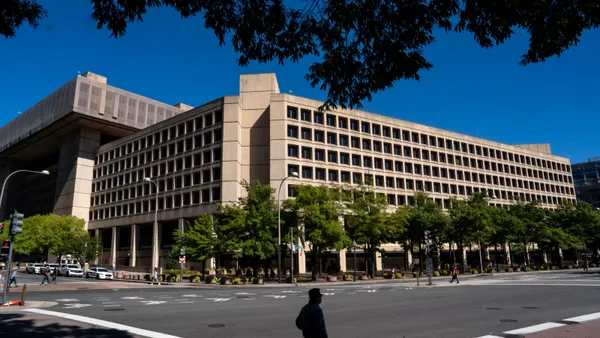Dive Brief:
- The New York City Council approved the “City of Yes for Carbon Neutrality” initiative and an ensuing set of zoning changes, according to a Dec. 6 release.
- The initiative, which removes zoning impediments to rooftop solar, solar parking canopies, onshore wind and energy storage systems, is the first of three proposals by Mayor Eric Adams aimed at reducing New York City’s carbon emissions 80% by 2050.
- Modernizing the city’s zoning code will bring the city “cleaner air, lower energy costs, smarter waste management and better access to [electric vehicle] technologies,” Adams said in a statement.
Dive Insight:
The City of Yes for Carbon Neutrality initiative and the 17 policies approved within it take effect on Dec. 11. These include opening up over 8,500 acres of parking lots across the city for the potential installation of solar panels, easing wall height and thickness restrictions that hinder building electrification and retrofit efforts, and more than doubling commercially zoned land where EV charging facilities can be located, according to the proposal document and release.
The zoning changes allow solar parking canopies up to 15 feet high over all parking areas and allow building owners to add solar energy systems on roofs — even if a building is taller than the permitted height in its respective zoning district. The initiative also updates zoning requirements for both sloped and flat roofs, increasing the height allowance of sloped roofs by 60 inches to allow a broader degree of solar panel orientation and increasing the height allowance of flat-roof solar energy systems by up to 15 feet.
The initiative also expands buildings’ rooftop and yard allowances to accommodate the increased need for outdoor electrified equipment such as heat pumps. It changes other rules to ensure a wide range of exterior retrofits and updates “Zone Green” floor area exemptions to ensure a better-than-code performance. It updates the framework for accessory mechanical equipment, like HVAC units and fire protection systems, to reflect the needs of electric retrofits and other energy infrastructure, by enabling equipment to cover up to 50% of buildings to a height of 15 feet, the proposal says.
These changes are expected to help facilitate environmentally friendly retrofits for over 50,000 buildings and make more than 400 million extra square feet of space available for EV chargers, the release says.
“This initiative will expand access to solar and energy storage in New York City, accelerate building modernization and deployment of electric vehicle charging stations while helping to create a healthier city for all,” Susanne DesRoches, vice president of clean resilient buildings at the New York State Energy Research and Development Authority, said in a statement.
Energy storage systems also received sweeping zoning updates as part of the approval. While energy storage systems were previously considered electricity utility substations, limiting their implementation and size within commercial and manufacturing districts, these systems are now categorized in the broader “energy infrastructure equipment” use case. This means energy storage systems can be used in residential districts on sites up to 10,000 square feet and without size limits in commercial and manufacturing districts.
Energy storage systems will now be subject to screening requirements on roofs and certain open areas, with the systems marked as an accessory use if its energy storage system does not exceed 24 hours of the primary use’s peak electrical load, the proposal says.
Correction: A previous version of this article misidentified the organization where Susanne DesRoches works. It is the New York State Energy Research and Development Authority.














